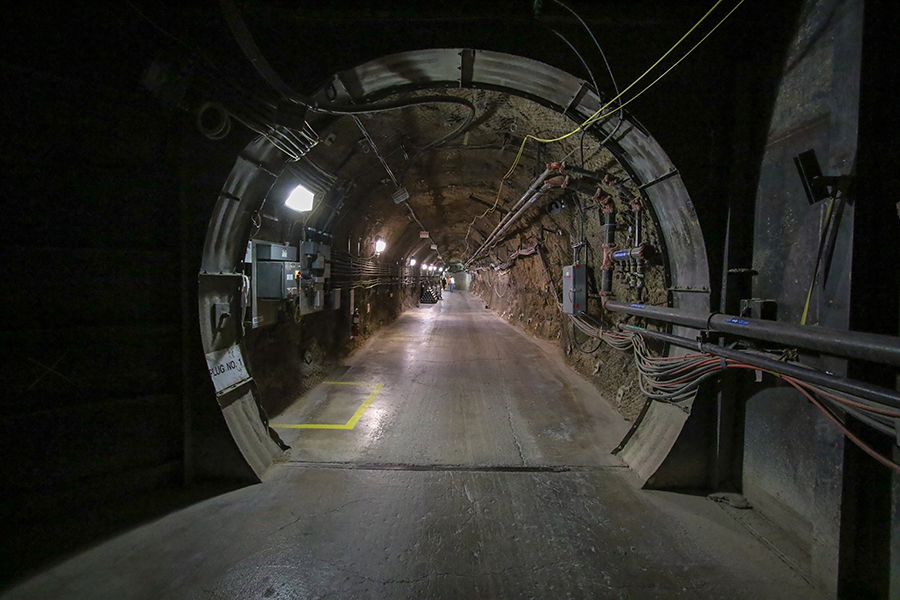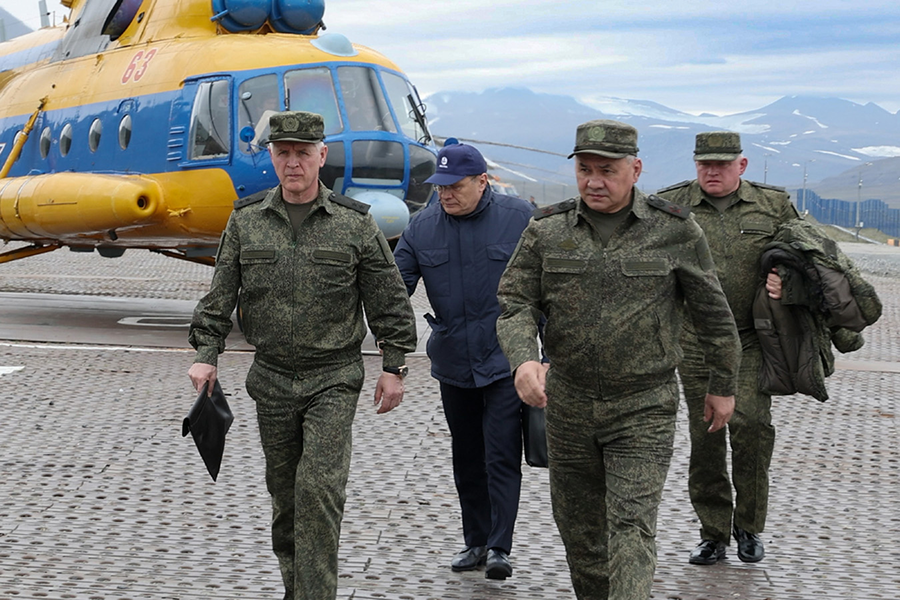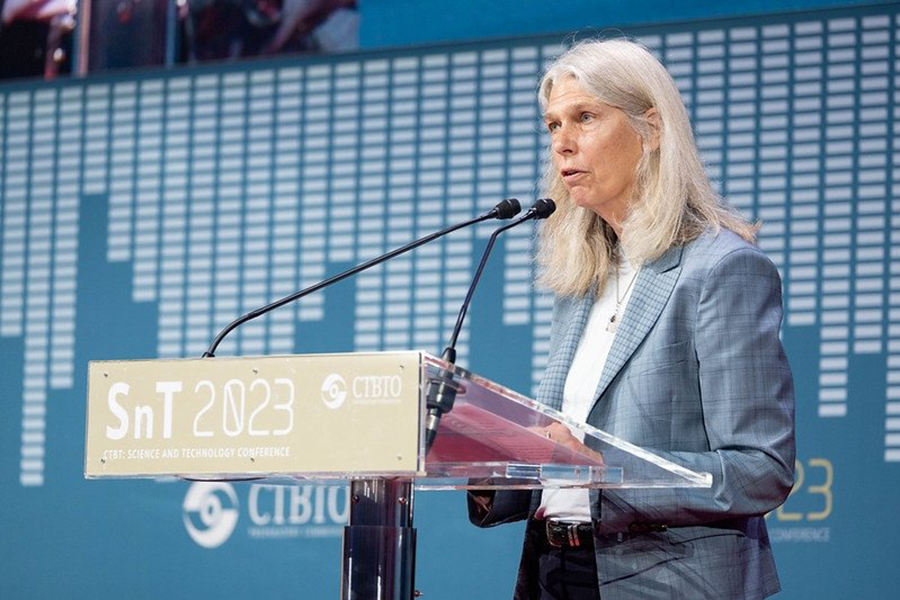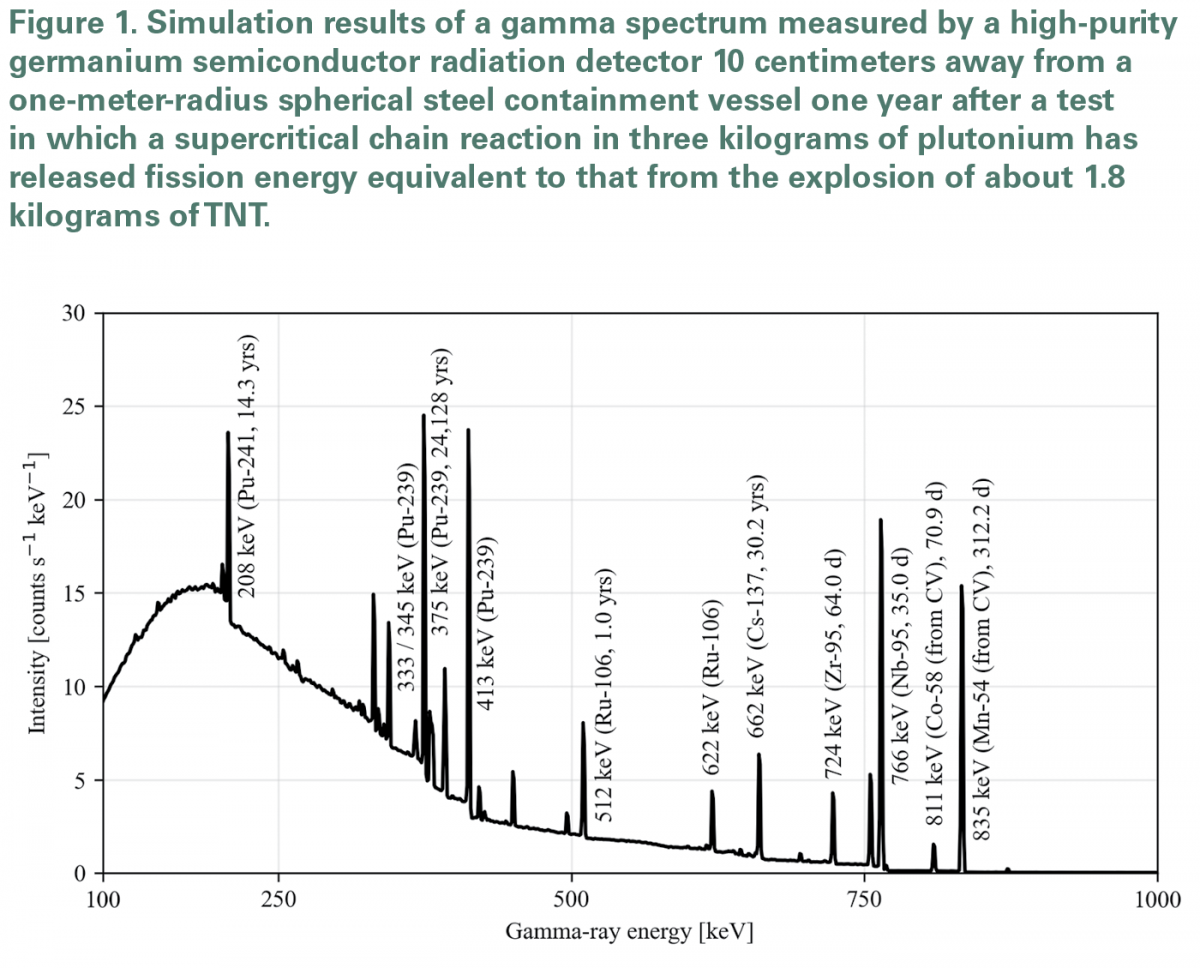Reducing Tensions Over Nuclear Testing at Very Low Yield
November 2023
By Julien de Troullioud de Lanversin, Christopher Fichtlscherer, and Frank N. von Hippel
 Twenty-three years after Russia ratified the Comprehensive Test Ban Treaty (CTBT), Moscow is “unratifying” but not unsigning the pact as a by-product of its war on Ukraine and related tensions with the United States.1
Twenty-three years after Russia ratified the Comprehensive Test Ban Treaty (CTBT), Moscow is “unratifying” but not unsigning the pact as a by-product of its war on Ukraine and related tensions with the United States.1
Such a move would contradict Russia’s previously stated commitments to help bring the CTBT into force and is another body blow to the embattled international arms control regime.
Although China and the United States have not ratified the treaty, they have signed it, effectively abided by it, and with Russia and several other states, have anchored a de facto moratorium on nuclear testing. Recent accusations made by the United States, however, have cast doubts on whether Russia and perhaps China are still adhering to their moratoriums for certain types of tests at very low yields.
With increasing nuclear tensions between great powers, these suspicions could lead nuclear-weapon states to abandon their moratoriums and resume full-scale nuclear weapons tests. It is therefore imperative that they discuss a new transparency and verification regime for very low-yield tests.
China most likely is waiting for the United States to ratify the treaty, but without a major educational and lobbying campaign backed by the White House, most Republican senators could be expected to revert to the position of their caucus, which voted against CTBT ratification in 1999.2 For the CTBT to come into force, China, Russia, the United States, and six other specific countries still must ratify it.3
According to the Vienna Convention on the Law of Treaties, however, treaty signatures, unless they are withdrawn officially, obligate countries to comply with the treaty.4 All states other than North Korea have observed a testing moratorium since 1998, and North Korea has not tested since 2017.
In the absence of muffling in an enormous, mined cavity, the International Monitoring System of the Preparatory Commission for the Comprehensive Nuclear-Test-Ban Treaty Organization (CTBTO) can detect nuclear tests of a yield of about 100 tons of TNT equivalent.5 That amount is less than 1 percent of the yield of the bomb dropped on Hiroshima. National and civilian seismic networks provide additional, more sensitive capabilities near former nuclear test sites. The CTBT, however, requires parties “not to carry out any nuclear weapon test explosion or any other nuclear explosion.”6 It is a “zero yield” treaty.
In 2016, China, France, Russia, the United Kingdom, and the United States issued a joint statement asserting “that a nuclear-weapon test explosion or any other nuclear explosion would defeat the object and purpose of the CTBT. ”7 According to the U.S. Department of State, the United States and the other governments participating in the CTBT negotiations agreed that the treaty “prohibits all nuclear explosions that produce a self-sustaining, supercritical fission chain reaction of any kind.”8 A fission chain reaction is called supercritical when it is exponentially growing and subcritical when it dies out. This interpretation of zero yield is commonly referenced as the U.S. zero yield standard.
An article-by-article analysis of the treaty submitted to the U.S. Congress by the Clinton administration in 1997 listed some explosive experiments that the U.S. nuclear weapons design laboratories would be allowed to conduct under the treaty. These include inertial confinement fusion experiments such as the laser-driven implosions of deuterium and tritium being carried out at the Lawrence Livermore National Laboratory’s National Ignition Facility and subcritical experiments with plutonium conducted underground in Nevada by the Livermore and Los Alamos national laboratories.9
 The U.S. government claims that China and Russia may be violating the U.S. interpretation of the treaty by carrying out supercritical tests in steel containment vessels underground. More than six decades ago, during the 1958-1961 test moratorium and the associated negotiations that ultimately produced the Partial Test Ban Treaty, the United States carried out very low-yield supercritical tests, which at that time were referenced as “hydronuclear” tests. The purpose of these experiments was to determine whether the fission “primaries” of some warheads recently added to the U.S. nuclear stockpile were “one-point safe.” A nuclear warhead is said to be one-point safe when no significant nuclear yield can be produced if the explosive around the plutonium pit is detonated at a single point by, for example, a bullet.
The U.S. government claims that China and Russia may be violating the U.S. interpretation of the treaty by carrying out supercritical tests in steel containment vessels underground. More than six decades ago, during the 1958-1961 test moratorium and the associated negotiations that ultimately produced the Partial Test Ban Treaty, the United States carried out very low-yield supercritical tests, which at that time were referenced as “hydronuclear” tests. The purpose of these experiments was to determine whether the fission “primaries” of some warheads recently added to the U.S. nuclear stockpile were “one-point safe.” A nuclear warhead is said to be one-point safe when no significant nuclear yield can be produced if the explosive around the plutonium pit is detonated at a single point by, for example, a bullet.
In these experiments, the amount of plutonium in the pit was reduced to a level where the pit was definitely one-point safe and then the plutonium was added back bit by bit. At each step, the explosive around the pit was detonated at what was believed to be its most sensitive point until there was a measurable fission yield or the one-point safety of the primary had been established. The increments of plutonium were kept small enough so that the fission energy released would be less than that released by one pound (about 0.5 kilograms) of TNT.10 The Soviet Union also conducted such tests, in large “Kolba” vessels designed to contain explosions with total energy yields (chemical explosive plus fission) up to 50 kilograms of TNT.11 Such low-yield tests would not be detected by the CTBTO off-site monitoring instruments.
There is little interest in hydronuclear experiments in the United States today. A 2012 discussion of hydronuclear testing by the U.S. National Academy of Sciences could not “identify any significant advantage that could accrue to a state testing at…very low levels (<1 ton [TNT equivalent]).”12 The nuclear weapons laboratories are confident in the one-point safety of U.S. nuclear warheads. The focus of the laboratories is instead on carrying out subcritical nuclear tests to verify that the plutonium metal behaves as required when imploded.
In a subcritical test, an assembly of plutonium is imploded inside a containment vessel, and neutrons are introduced into the imploded mass to initiate a fission chain reaction. Because the mass remains subcritical, the chain reaction dies away. With current technical limitations on how many initiating neutrons can be introduced into the imploded plutonium mass, planned U.S. subcritical tests would generate about 10 billion fissions,13 which would release about 0.3 joules of energy, roughly equal to what would be released by the detonation of about 0.1 milligrams of TNT.
The measurement equipment required to analyze such very low-yield experiments is costly. The U.S. National Nuclear Security Administration (NNSA) is installing a $2 billion, 100-meter-long electron accelerator in a tunnel in its 300-meter-deep underground U1a subcritical testing facility in Nevada. The electrons will produce high-energy X-rays in a target outside the containment vessel to image the interior of the imploding plutonium mass. Neutrons will be injected to start the subcritical chain reaction, and gamma rays from the fissions will be measured to determine the rate at which the chain reaction dies away and thereby the degree of criticality that has been achieved.14
In 2019, the director of the U.S. Defense Intelligence Agency publicly accused Russia of “probably not adhering to the nuclear testing moratorium in a manner consistent with the zero-yield standard.”15 In 2020 the U.S. State Department indicated in its annual report, Adherence to and Compliance with Arms Control, Nonproliferation, and Disarmament Agreements and Commitments, that this conclusion had interagency support: “Despite Russia renewing its nuclear testing moratorium in 1996, some of its activities since 1996 have demonstrated a failure to adhere to the U.S. zero-yield standard, which would prohibit supercritical tests.”16 The report stated that the evidence was classified. It also expressed concern that “lack of transparency” at China’s Lop Nur test site “raise[s] concerns regarding China’s adherence to its test moratorium, which China declared in 1996, judged against the U.S. [subcritical] ‘zero-yield’ standard.”
As noted above, a 2012 review by the U.S. National Academy of Sciences could not “identify any significant advantage that could accrue to a state testing at…very low levels(<1 ton [TNT equivalent]).” A possible motive for Russia and China to carry out very low-yield supercritical or hydronuclear experiments could be because the degree of criticality of imploded plutonium pits is much easier to measure in a supercritical test, which produces many more fissions than a subcritical experiment and therefore many more diagnostic gamma rays. If Russia and China are conducting supercritical tests, perhaps it is because they do not want to match the more than $2 billion the United States is spending on its underground electron accelerator and other diagnostic equipment required for subcritical tests.
One can only speculate how the U.S. intelligence community concluded that Russia has conducted more than one supercritical experiment since 1996. One possibility could be that satellite images of Russia’s Novaya Zemlya test site have revealed large containment vessels such as a Kolba vessel being taken into the testing tunnels.
 Once the CTBT comes into force, any state-party may request a short-notice, on-site inspection of an area where it believes that a nuclear explosion or even a supercritical test may have taken place. Given that none of the remaining states that must sign and/or ratify the treaty have done so in recent years, however, the CTBT entry into force is years away. In the meantime, it would be advantageous to develop and demonstrate technical confidence-building measures through new methods and protocols that could determine whether contained experiments involving fissile material are subcritical.
Once the CTBT comes into force, any state-party may request a short-notice, on-site inspection of an area where it believes that a nuclear explosion or even a supercritical test may have taken place. Given that none of the remaining states that must sign and/or ratify the treaty have done so in recent years, however, the CTBT entry into force is years away. In the meantime, it would be advantageous to develop and demonstrate technical confidence-building measures through new methods and protocols that could determine whether contained experiments involving fissile material are subcritical.
At the 2023 CTBTO Science and Technology Conference in Vienna, U.S. NNSA Administrator Jill Hruby, whose organization maintains U.S. nuclear warheads, offered voluntary U.S. transparency, thus creating the possibility for international cooperation.
We are open to hosting international observers for monitoring and verification research and development on our subcritical experiments…. We are also open to working with others to develop a regime that would allow reciprocal observation with radiation detection equipment at each other’s subcritical experiments to allow confirmation that the experiment was consistent with the CTBT. We have several well-considered technical ideas on how this could be effective…. I sincerely look forward to future engagement with Russia and China on participation in bi- or tri-lateral verification confidence-building measures and other technological interactions to support future arms control and nonproliferation agreements.17
To date, these transparency proposals do not appear to have been detailed publicly or transmitted in a written form, and the Russian and Chinese governments have not accepted or rejected the offer.
Yet, there is a technical method to determine the amount of fission energy released by a contained, very low-yield test months or years later, by measuring the gamma rays from the radioactive decay of fission products and from transmutation products produced in the steel containment vessel as a result of irradiation by fission neutrons (fig. 1).18 Because the yields of supercritical experiments are typically orders of magnitude larger than those of subcritical experiments, such measurements would provide relevant evidence of a breach of the U.S. interpretation of zero yield.
 These verification methods would not be much help if a country does not announce all contained underground experiments or if it simply buries its containment vessels, as is the current custom, making them unavailable for inspection. To enable the implementation of verification after the test, a host country would have to agree not to bury or entomb a containment vessel before it is subjected to international inspection.
These verification methods would not be much help if a country does not announce all contained underground experiments or if it simply buries its containment vessels, as is the current custom, making them unavailable for inspection. To enable the implementation of verification after the test, a host country would have to agree not to bury or entomb a containment vessel before it is subjected to international inspection.
Continuity of knowledge for each containment vessel could be ensured by monitoring the tunnels or shafts through which containment vessels and plutonium could be introduced into the underground experimental complex. Each containment vessel could be tagged19 or “fingerprinted”20 for later identification. It is possible that this process could be managed remotely for the most part by CTBTO inspectors. Such an arrangement might be supplemented by remotely monitored on-site seismic stations to detect and localize contained underground explosions. The United States already has demonstrated such capabilities at its test site.21
As of mid-October, neither China nor Russia had responded to the U.S. proposal for reciprocal transparency at the three countries’ test sites.22 Given the high level of tensions between Russia and the United States over the war in Ukraine and between China and the United States, and the fact that the United States has not yet transmitted a formal written proposal, that is not surprising. Hopefully, in the longer term, the U.S. offer will open a path out of the destructive debate over possible but inconsequential Russian and Chinese violations of the U.S. interpretation of the CTBT.
ENDNOTES
1. Guy Faulconbridge and Filipp Lebedev, “Russian Duma Takes First Step to Revoke Ratification of Nuclear Test Ban Treaty,” Reuters, October 17, 2023.
2. In 1999, all but two Republican senators voted against ratification of the Comprehensive Test Ban Treaty (CTBT), and all but one Democratic senator voted in favor. Craig Cerniello, “Senate Rejects Comprehensive Test Ban Treaty; Clinton Vows to Continue Moratorium,” Arms Control Today, September/October 1999, https://www.armscontrol.org/act/1999-09/press-releases/senate-rejects-comprehensive-test-ban-treaty-clinton-vows-continue.
3. Egypt, Iran, and Israel have not ratified the CTBT. India, North Korea, and Pakistan have not signed the CTBT. Preparatory Commission for the Comprehensive Nuclear-Test-Ban Treaty Organization (CTBTO), “Status of Signature and Ratification,” n.d., https://www.ctbto.org/our-mission/states-signatories (accessed October 21, 2023).
4. Vienna Convention on the Law of Treaties, May 23, 1969, 1155 U.N.T.S. 331, art. 18.
5. National Research Council, “The Comprehensive Nuclear Test Ban Treaty: Technical Issues for the United States,” 2012, fig. 2-8.
6. CTBTO, “Comprehensive Nuclear-Test-Ban Treaty (CTBT),” n.d., https://www.ctbto.org/sites/default
/files/Documents/CTBT_English_withCover.pdf.
7. Office of the Spokesperson, U.S. Department of State, “Joint Statement on the Comprehensive Nuclear-Test-Ban Treaty by the Nuclear Nonproliferation Treaty Nuclear-Weapon States,” September 15, 2015, https://2009-2017.state.gov/r/pa/prs/ps/2016/09/261993.htm.
8. Bureau of Arms Control, Verification, and Compliance, U.S. Department of State, “Scope of the Comprehensive Nuclear Test-Ban Treaty,” n.d., https://2009-2017.state.gov/t/avc/rls/212166.htm (accessed October 21, 2023).
9. “Comprehensive Nuclear Test-Ban Treaty: Message From the President of the United States,” 105th Cong., 1st sess., Treaty Doc. 105-28, p. 4 (“Activities not affected by the treaty”).
10. Robert N. Thorn and Donald R. Westervelt, “Hydronuclear Experiments,” Los Alamos National Laboratory, LA-10902-MS, February 1987, https://www.osti.gov/servlets/purl/6646692.
11. National Nuclear Center of the Republic of Kazakhstan, “Nuclear Tests Consequences Elimination. ‘Kolba’ Containers Preservation,” May 9, 2022, https://www.nnc.kz/en/news/show/346.
12. “[O]ne benefit a State might gain from such very low yield tests would be to improve one-point safety. Such a step would not, standing alone, impair U.S. security.” National Research Council, “Comprehensive Nuclear Test Ban Treaty,” p. 104 fn.
13. David John Funk, “Enhanced Capabilities for Subcritical Experiments (ECSE): Portfolio Overview,” Los Alamos National Laboratory, LA-UR-18-28253, March 11, 2019, p. 46, https://permalink.lanl.gov/object/tr?what=info:lanl-repo/lareport/LA-UR-18-28253.
14. U.S. Government Accountability Office, “Program Management Improvements Would Benefit U.S. Efforts to Build New Experimental Capabilities,” GAO-23-105714, 2023, p. 7.
15. Hudson Institute, “The Arms Control Landscape ft. DIA Lt. Gen. Robert P. Ashley, Jr.,” May 29, 2019, https://www.hudson.org/national-security-defense/transcript-the-arms-control-landscape-ft-dia-lt-gen-robert-p-ashley-jr.
16. U.S. Department of State, “Adherence to and Compliance With Arms Control, Nonproliferation, and Disarmament Agreements and Commitments,” June 2020, p. 50, https://www.state.gov/wp-content/uploads/2020/06/2020-Adherence-to-and-Compliance-with-Arms-Control-Nonproliferation-and
-Disarmament-Agreements-and-Commitments-Compliance-Report-1.pdf.
17. Jill Hruby, Remarks at the CTBT Science and Technology Conference 2023, June 19, 2023, https://www.energy.gov/nnsa/articles/remarks-nnsa-administrator-jill-hruby-ctbt-science-and-technology-conference-2023.
18. Julien de Troullioud de Lanversin, Christopher Fichtlscherer, and Frank N. von Hippel, “Onsite Verification of the Comprehensive Nuclear Test Ban Treaty at Very Low Yields,” n.d., https://resources.inmm.org/sites/default/files/2021-09/a325.pdf.
19. Keith M. Tolk, “Reflective Particle Technology for Identification of Critical Components,” SAND-92-1676C, n.d., https://www.osti.gov/servlets/purl/7116334.
20. See Johannes Strömbom, “Natural Fingerprinting of Steel,” Luleå University of Technology, 2021, https://www.diva-portal.org/smash/get/diva2:1568687/FULLTEXT01.pdf.
21. National Research Council, “Comprehensive Nuclear Test Ban Treaty,” pp. 74-75.
22. Jonathan Tirone, “U.S. Offers Nuclear-Test Inspections to Ease Russia, China Tension,” Bloomberg, September 28, 2023.
Julien de Troullioud de Lanversin is an assistant professor in the Division of Public Policy at Hong Kong University of Science and Technology. Christopher Fichtlscherer is a doctoral graduate student at RWTH Aachen University. Frank N. von Hippel is professor of public and international affairs emeritus at Princeton University’s Program on Science and Global Security.
